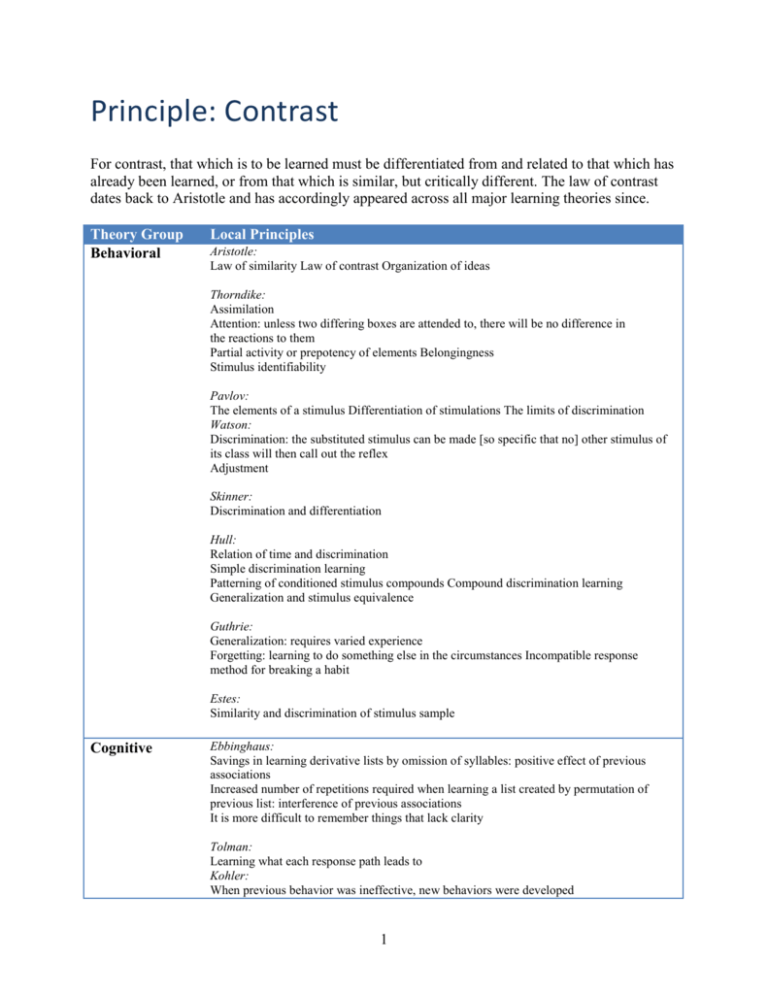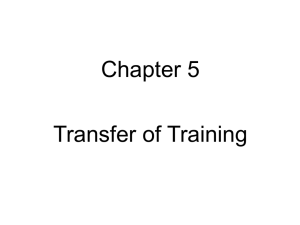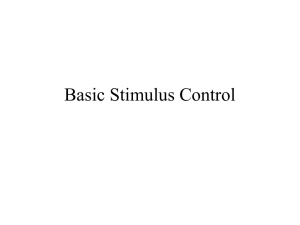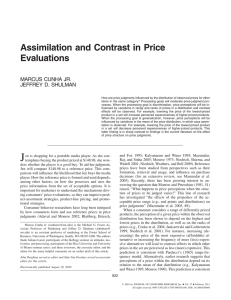Contrast_overview
advertisement

Principle: Contrast For contrast, that which is to be learned must be differentiated from and related to that which has already been learned, or from that which is similar, but critically different. The law of contrast dates back to Aristotle and has accordingly appeared across all major learning theories since. Theory Group Behavioral Local Principles Aristotle: Law of similarity Law of contrast Organization of ideas Thorndike: Assimilation Attention: unless two differing boxes are attended to, there will be no difference in the reactions to them Partial activity or prepotency of elements Belongingness Stimulus identifiability Pavlov: The elements of a stimulus Differentiation of stimulations The limits of discrimination Watson: Discrimination: the substituted stimulus can be made [so specific that no] other stimulus of its class will then call out the reflex Adjustment Skinner: Discrimination and differentiation Hull: Relation of time and discrimination Simple discrimination learning Patterning of conditioned stimulus compounds Compound discrimination learning Generalization and stimulus equivalence Guthrie: Generalization: requires varied experience Forgetting: learning to do something else in the circumstances Incompatible response method for breaking a habit Estes: Similarity and discrimination of stimulus sample Cognitive Ebbinghaus: Savings in learning derivative lists by omission of syllables: positive effect of previous associations Increased number of repetitions required when learning a list created by permutation of previous list: interference of previous associations It is more difficult to remember things that lack clarity Tolman: Learning what each response path leads to Kohler: When previous behavior was ineffective, new behaviors were developed 1 Cognitive Cognitive Information Processing: New knowledge must be related to old Analysis and pattern identification Pattern recognition Template matching Prototype model Exemplars Feature analysis Critical and invariant features Elaborative rehearsal: associating new knowledge with old Defining features Characteristic features Use of examples to clarify the boundaries of a concept Revisit the same material in different contexts and for different purposes Coding and organization using pre-existing associations already in long-term store Clustering related items into categories or patterns Guided questioning: comparing and contrasting Familiarity facilitates verification of statements Ausubel: Hierarchical organization of cognitive structure Forms of meaningful learning: subordinate, superordinate, combinatorial, assimilation Subsumability Subsumers Discriminability Stability and clarity of subsumers Progressive differentiation Anchoring Rotely learned materials subject to interference of similar material Dissociability Obliterative stage of subsumption and memorial reduction Forgetting due to contrast Insufficient discriminability Similarity Assimilation Concept formation and assimilation Varied context Positive and negative instances Irrelevant Information Integrative reconciliation Negative transfer Comparative organizers Successive contrast Apparent or actual contradiction Early review: promotes consolidation and relation of new material to existing to acquire more subtle potential meanings Transferability: balance between overlearning of intratask instances and exposure to intertask diversity on the other Schema Theory: Matching new information to schemata Organization of structures and accumulation of facts Congruence through tuning and restructuring Improving the accuracy Generalizing the applicability Specializing the applicability Determining default values Adjustment of variable constraints Degree of discrepancy Encoding: constants substituted for variables Analogies, metaphors, and models 2 Constructive General: Synthesizing new experiences into what we have previously come to understand Interpret to conform versus generate new rules Deep understanding through contrast Teaching method: challenge original hypotheses Linking new information to existing knowledge Piaget: Establishing the base substructure for future operations of thought Adaptation to the universe Assimilation Accommodation Differentiation Contrast through contact with the environment Bruner: Importance of detail Linking past to present to future – representation and integration Episodic empiricism vs. constructionism - learning is effective when past information is connected and related to new information The act of learning: information that is counter to or is a replacement for what a person has previously known Human Social n/a Vygotsky: Organization through symbolic activity Internalization Bandura: Attention: perceptual sets determine features extracted from observations Retention: representation in memory in symbolic form must be distinct Motor Reproduction: spatial and temporal organization must be distinct Situated learning: No specific correlating local principles identified Activity theory: Disturbances and contradictions Questioning of standard practice Cognitive apprenticeship: Understanding what needs to be learned in terms of what is already known Generalization and transferability through varied context Sequence of increasing diversity Learning different conditions of knowledge application Abstraction of knowledge through multiple contexts 3









